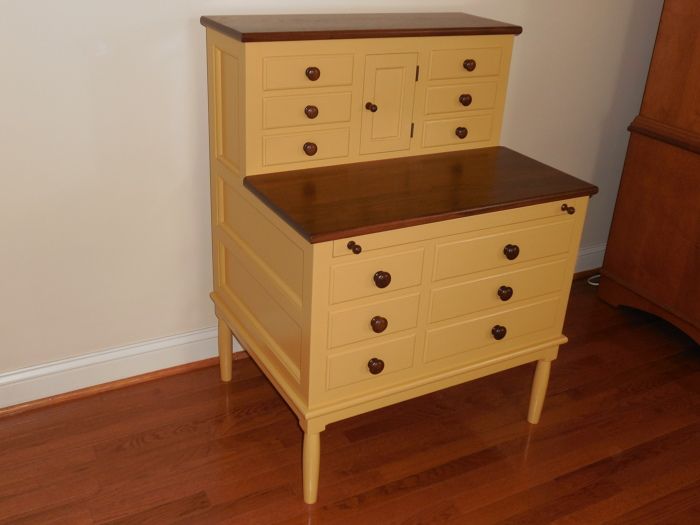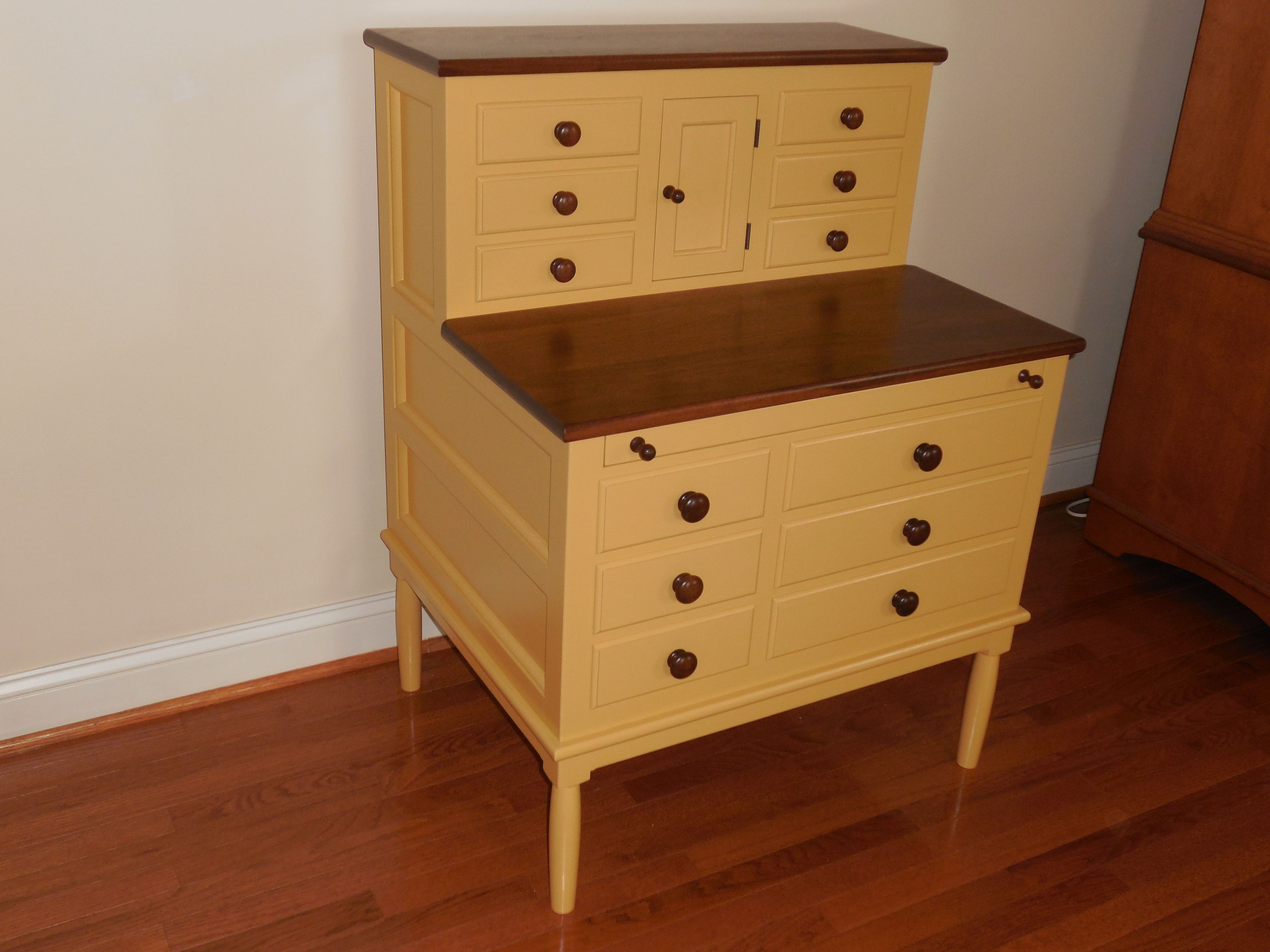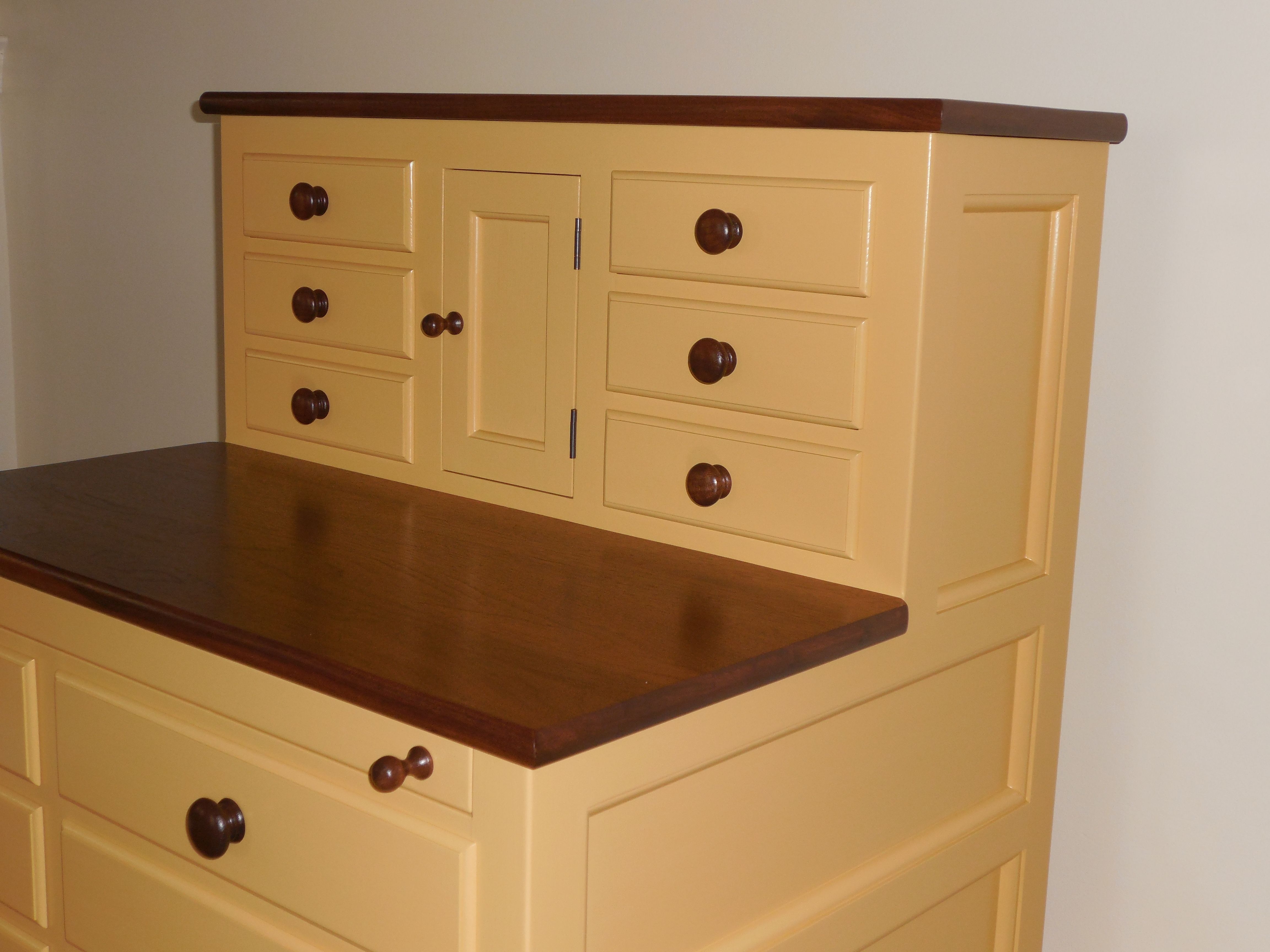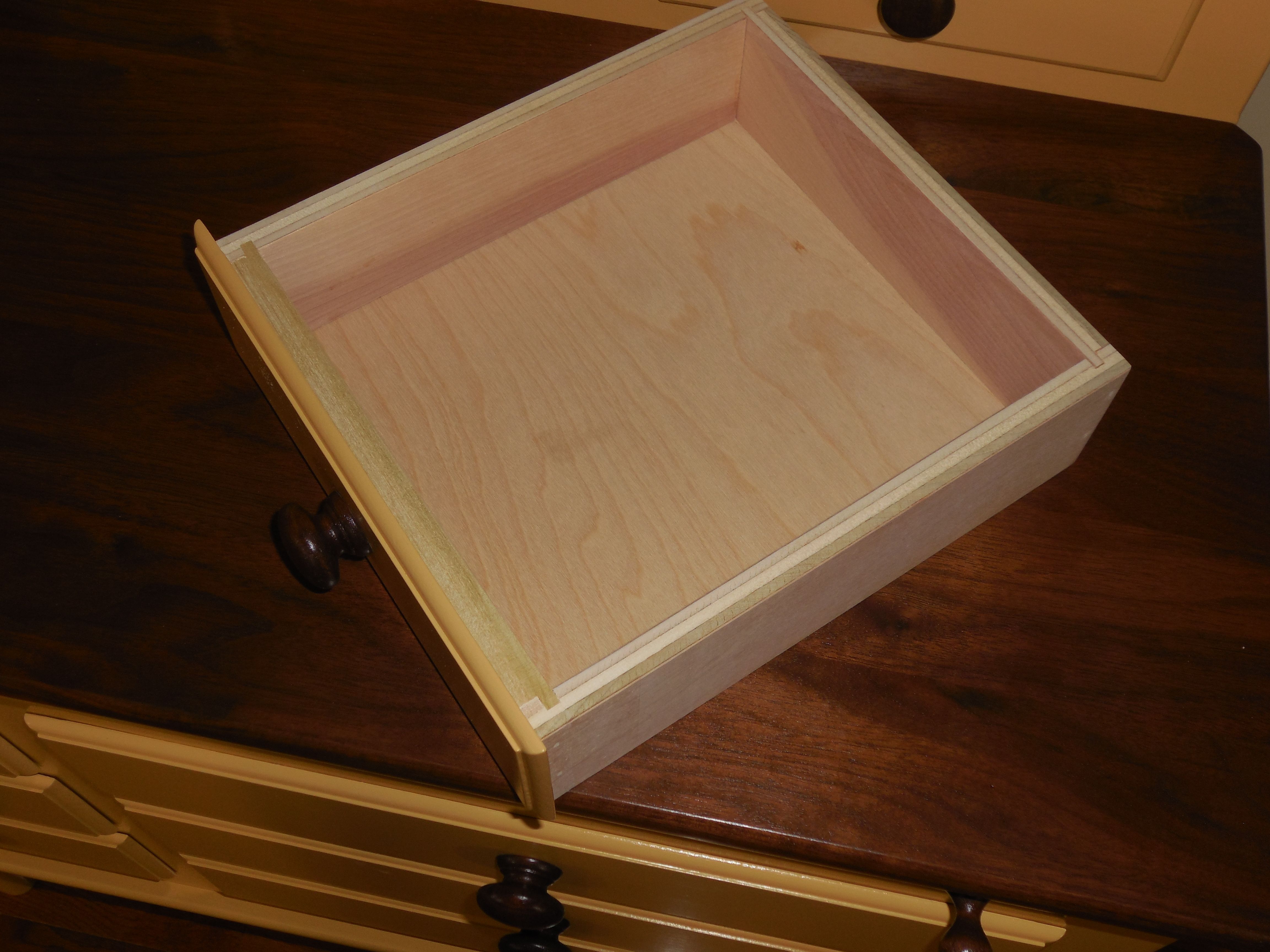Shaker-style sewing desk…for fly tying

View of entire Shaker fly-tying desk
Needle and thread have been substituted with hook and thread with this Shaker-style sewing desk that I will use as a fly-tying station. Although the piece was inspired by antique originals from the mid 1800s, the design is my own. Dimensions are 40″ high by 30″ wide by 24″ deep. Details include 12 drawers (three different sizes), a cubby in the upper gallery, and a pull-out work surface. The carcass is constructed of ¾” inch thick plywood with dust frames and shelves seated in dadoes and secured with glue and screws. Kreg’s entry-level pocket-hole jig was used to construct the face frames, dust frames, faux panels, and the apron with the turned legs; pocket-hole joinery was also used to secure the faces frames to the carcass. Drawers were constructed using lock-rabbet joinery as demonstrated in Chris Gochnour’s video series entitled “Build a Multidrawer Wall Cabinet” (https://www.finewoodworking.com/woodworking-plans/video/build-a-multidrawer-wall-cabinet.aspx). Door construction involved the cope-and-stick method described in Michael Pekovich’s article “Frame-and-panel doors made easy” (FWW issue #193, September/October 2007, p. 42-47). Primary materials included black walnut flooring that was rescued from a local millwork shop, S4S poplar from Home Depot, and Columbia Forest Products’ Purebond birch-veneer plywood in ¾”, ½”, and ¼” thicknesses. The turned legs are Shaker coffee table legs from Tablelegs.com that were modified to suit this project. The knobs are from NiceKnobs.com. The walnut surfaces and knobs were stained with General Finishes’ gel stain in “Nutmeg.” The painted surface is three coats of General Finishes’ milk paint in “Somerset Gold.” The topcoat is General Finishes’ High Performance water-based polyurethane.





















Log in or create an account to post a comment.
Sign up Log in